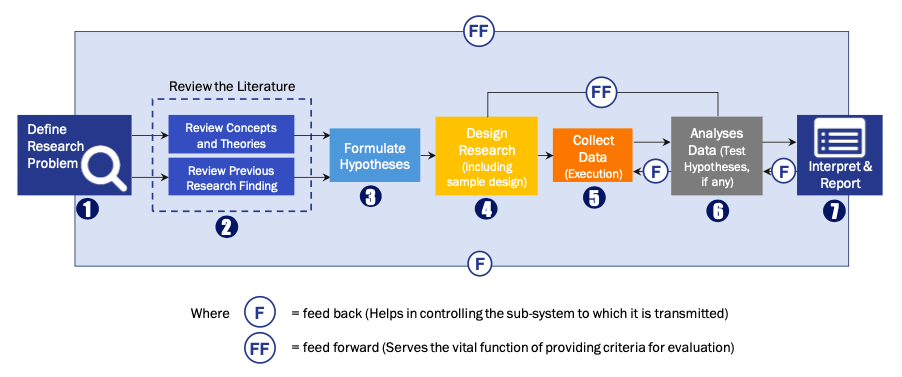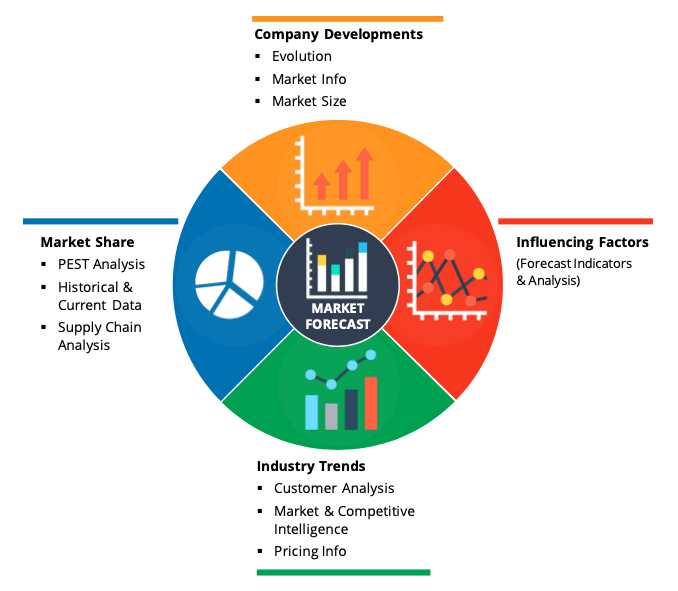Market OverviewArtificial intelligence (AI) denotes creation of exclusive systems with the help of software and algorithms that can perform definite tasks without human instruction and intervention. AI is used in pharmaceutical and healthcare for the estimation of human cognition and analysis of difficult diagnostic and medical imaging data. The basic purpose for AI in healthcare is to investigate the relationship between patient outcomes and treatment techniques. Moreover, AI is also applicable in drug discovery, medication management, and treatment plans.
Robotic personal assistants and innovation in clinical research should drive healthcare AI market growth. Also, growing application in the field of precision medicine and genomics will increase personalized treatments tailored to an individual patient’s need and requirements. Big data analytics usage in healthcare is growing at a tremendous speed. Growing volume of healthcare data have resulted in increasing need for AI technology to accelerate the speed of service delivery in healthcare and to perform data mining. Rise of promising and novel application for disease monitoring and diagnosis is expected to drive the market growth. Some of the other reasons for the growth of the global AI in healthcare market include increasing need for coordination between patients and healthcare workforce; improve patient outcomes, increasing adoption of precision medicine, substantial use of big data in the healthcare, and significant rise in investments in venture capital. For instance, in 2018, GV and Kleiner Perkins invested around USD 21 million in the Viz.ai-an AI start-up.
High capital requirement due to complicated nature of machines, huge repair and maintenance charges will discourage corporations to venture into the market. Besides, fears regarding adoption of AI technology would lead to large scale unemployment and redundancy should act restrictive for industry expansion. Moreover, AI and robots can analyse and record patient data, improve diagnostics services and support surgeons and doctors in critical interventions leading to the new market opportunities and chances in the future.
Segment OverviewGlobal AI in healthcare market has been segmented majorly on the basis of technology and application in healthcare. On the basis of technology the market has been segmented as deep learning, querying methods, natural language processing, and context aware processing.
Similarly on the basis on application the market has been segmented as drug discovery, medical imaging and diagnosis, virtual assistant, inpatient care and hospital management, and others. Drug discovery segment has emerged as the largest segment as the companies are focusing on integrating the clinical trials in drug development with AI so as to reduce market time and failure.
Regional OverviewGeographically, the market has been segmented into four major economies including North America, Europe, Asia-Pacific, and LAMEA. North America consists of US, Canada, and Rest of North America. Europe comprises of the major countries including UK, Germany, France, Italy, Spain and Rest of Europe. Similarly, Asia Pacific consists of the major countries such as, Japan, China, India, South Korea, Australia and, Rest of Asia Pacific. LAMEA consists of Brazil, Saudi Arabia, UAE, and Rest of LAMEA.
North America dominated the global healthcare AI market. The Rising adoption of healthcare IT, and availability of funding for AI are some of the major factors contributing to market growth. Asia Pacific is anticipated to emerge as fastest growing region. Improving infrastructure, growing number of AI start-ups, and progressively increasing adoption of the advanced technologies are some of the major factors contributing to the market growth. Furthermore, rise in the number of government initiatives for the AI technology is also expected to support the growth. For instance, in 2019, South Korea, the Ministry of Science and ICT declared that it would initiate trial service of AI-based precision medicine named Dr. Answer, by the end of the year.
Competitor overviewThe major players in healthcare AI market are IBM Corporation, NVIDIA Corporation, Nuance Communications, Inc., Microsoft, Intel Corporation, and DeepMind Technologies Limited. Increasing investments in research and development, service differentiation and collaborations with the other major industry participants, are the key strategies adopted by the major players for gaining competitive edge. For instance, in 2019, IBM Corporation, a big technological giant announced 10-year partnerships with the Vanderbilt University Medical Centre and the Brigham and Women’s Hospital. The partnership includes an investment of over USD 50 million in artificial inteligence research.
Key Players
- IBM Corporation
- Microsoft Corporation
- Google Inc.,
- Intel Corporation
- GE Healthcare
- CloudMedX, Inc.,
- Nvidia Corporation
- iCarbonX
- Welltok Inc.,
- Next IT Corp.,
Market Segmentation
By Technology
- Deep Learning
- Querying Method
- Natural Language Processing (NLP)
- Context Aware Processing
By Application
- Drug Discovery
- Medical Imaging and Diagnosis
- Virtual Assistant
- In Patient Care and Hospital Management
- Others
By Geography
- North America
- Europe
- UK
- Germany
- France
- Italy
- Spain
- Rest of Europe
- Asia-Pacific
- Japan
- China
- India
- Australia
- South Korea
- Rest of Asia-Pacific
- LAMEA
- Brazil
- Saudi Arabia
- UAE
- Rest of LAMEA
Research Process
Data Library Research are conducted by industry experts who offer insight on
industry structure, market segmentations technology assessment and competitive landscape (CL), and penetration, as well as on emerging trends. Their analysis is based on primary interviews (~ 80%) and secondary research (~ 20%) as well as years of professional expertise in their respective industries. Adding to this, by analysing historical trends and current market positions, our analysts predict where the market will be headed for the next five years. Furthermore, the varying trends of segment & categories geographically presented are also studied and the estimated based on the primary & secondary research.
In this particular report from the supply side Data Library Research has conducted primary surveys (interviews) with the key level executives (VP, CEO’s, Marketing Director, Business Development Manager
and SOFT) of the companies that active & prominent as well as the midsized organization
FIGURE 1: DLR RESEARH PROCESS

Primary Research
Extensive primary research was conducted to gain a deeper insight of the market and industry performance. The analysis is based on both primary and secondary research as well as years of professional expertise in the respective industries.
In addition to analysing current and historical trends, our analysts predict where the market is headed over the next five years.
It varies by segment for these categories geographically presented in the list of market tables. Speaking about this particular report we have conducted primary surveys (interviews) with the key level executives (VP, CEO’s, Marketing Director, Business Development Manager and many more) of the major players active in the market.
Secondary Research
Secondary research was mainly used to collect and identify information useful for the extensive, technical, market-oriented, and Friend’s study of the Global Extra Neutral Alcohol. It was also used to obtain key information about major players, market classification and segmentation according to the industry trends, geographical markets, and developments related to the market and technology perspectives. For this study, analysts have gathered information from various credible sources, such as annual reports, sec filings, journals, white papers, SOFT presentations, and company web sites.
Market Size Estimation
Both, top-down and bottom-up approaches were used to estimate and validate the size of the Global market and to estimate the size of various other dependent submarkets in the overall Extra Neutral Alcohol. The key players in the market were identified through secondary research and their market contributions in the respective geographies were determined through primary and secondary research.
Forecast Model


